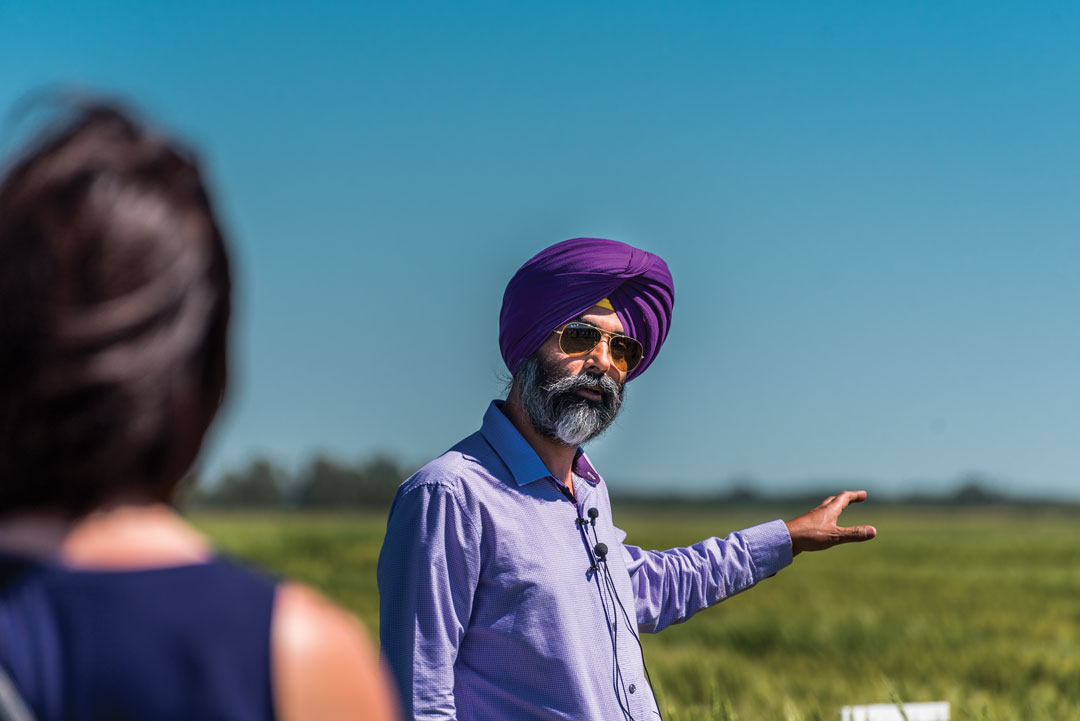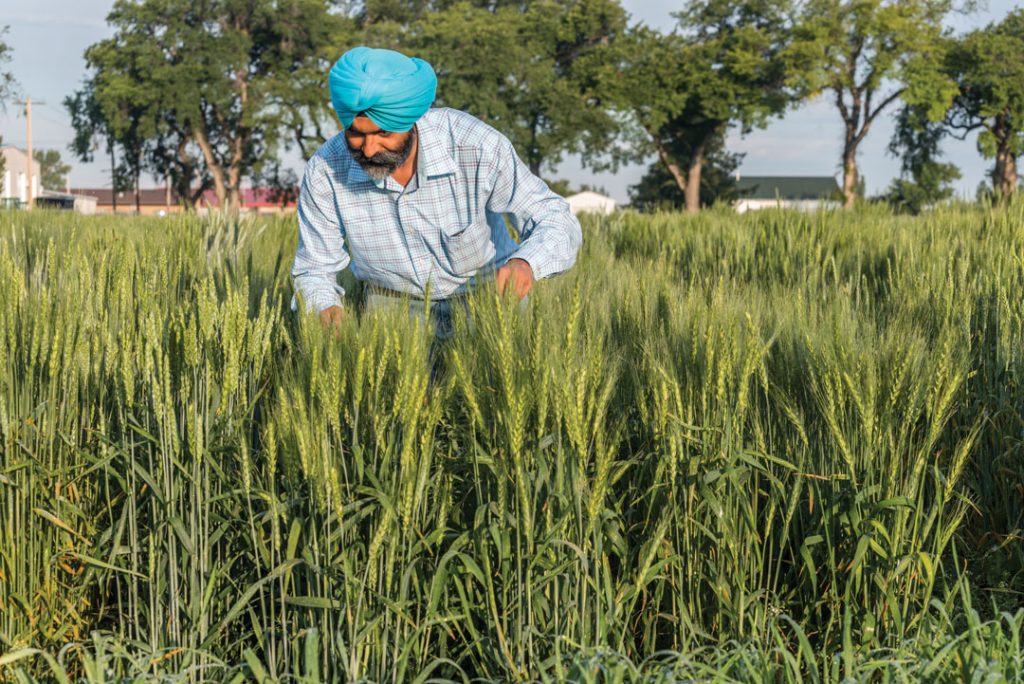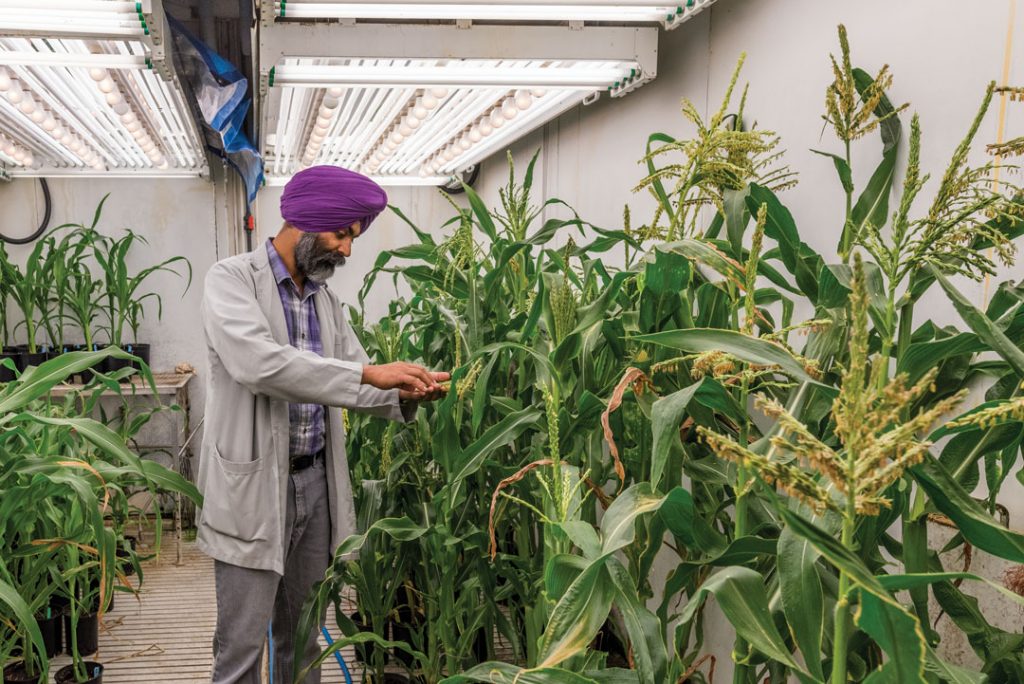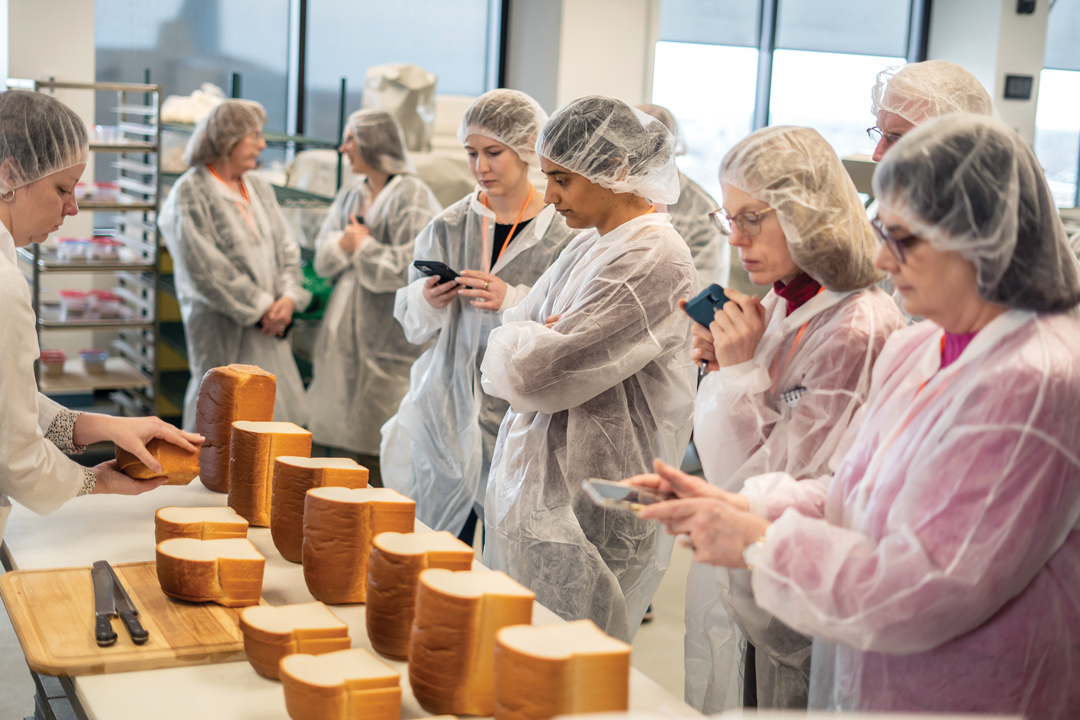BETTER BREEDING
A LOOK INSIDE THE COMPLEX WORLD OF CULTIVAR CREATION WITH DR. HARPINDER RANDHAWA
BY ELLEN COTTEE
A wheat breeder with Agriculture and Agri-Food Canada, Dr. Harpinder Randhawa, a research
scientist specializing in spring wheat and triticale breeding, has spent more than 20 years immersed in this complex branch of agricultural science. In his work at the Lethbridge Research and Development Centre, happy farmers are his aim as he develops varieties with higher yield, improved disease resistance and better qualities for baking, animal feed and industrial uses.
GrainsWest: How did you get started in wheat breeding?
Dr. Harpinder Randhawa: I grew up on a farm in India and did my bachelor of science in agriculture and master’s in plant breeding [at Punjab Agricultural University], and worked as a rice breeder for a couple of years before I moved to Canada in 1997. In 1998, I started school in Saskatoon, where I did my PhD. I did my post-doctorate in Nebraska before I moved to Washington, where I spent almost five years doing research. I got this job in 2007.
GW: What are your concerns in terms of diseases in wheat?
HR: We all know how devastating Fusarium head blight (FHB) is, and last year was a very bad year. Rain in late July and early August coincided with hot and humid conditions at flowering time, creating a perfect environment for fungus. Fusarium not only causes yield losses because you have a shrivelled grain and it will sometimes blow away with the combine, but the fungus also produces DON (deoxynivalenol), a vomitoxin, and DON is bad for human and animal health—you can’t even use that grain for feedlot.
Europe an export markets have a very strict maximum tolerance for DON content in the grain, so we have to control this disease.
GW: Is disease resistance all about the breeding?
HR: You don’t want to put all your eggs in one basket and just rely on resistance, because it will break down. Our job as breeders is to bring the best genetics and we try to breed resistance for all diseases, including Fusarium. Then the agronomists and others bring in their other controls like fungicide application or crop rotation. There has to be a total package for best management.
GW: What are the keys to success in breeding new wheat varieties?
HR: It takes 10 years to develop a new variety. We have three categories of breeding objectives and it’s very complicated to bring all these things together.
One is agronomic objectives, or what is best for the farmer. These include high yield, plant height and good straw so the crop doesn’t lodge. [These factors] depend on the region you’re growing in. In irrigation areas, they may want a shorter variety, while in drier locations, they want it a little bit taller. Then maturity: we have a range—southern Alberta can go about 110 days, but in the north, they stick to about 90 days for their growing season.
The second category is disease resistance. Some areas are more prone to one or another of the diseases. Leaf rust, stem rust and Fusarium are big in Manitoba, while in Alberta, stripe rust and Fusarium are getting attention. Different regions need a different resistance package.
The third objective is end-use quality. You can produce the best grain, but if it doesn’t produce nice bread or noodles or cake, there’s no use and it just ends up in feed or ethanol. Quality is determined by protein levels, gluten strength, the colour and baking properties. We export wheat to more than 70 countries and everybody uses it differently.
GW: What are your current wheat projects?
HR: My focus is Alberta—most of our wheat varieties are good for all of Western Canada, with some emphasis on irrigation for the south—except for the northern climate (they need to breed varieties with longer maturity; there are researchers in the north working on those).
I just registered AAC Awesome—it is the highest-yielding variety in Western Canada. It’s a spring wheat, mostly targeted for ethanol. It has a non-milling wheat special-purpose classification. Good plant type and straw strength, resistant to all rust and a mid-resistance to FHB and midge tolerance.
GW: Tell us about your public-private-producer partnership Partnership with the Alberta Wheat Commission (AWC) and Canterra Seeds that started in 2014.
HR: It’s a five-year agreement and it’s a unique partnership, the first time we’ve had it in Western Canada. Usually, we’re funded by producer money, like the AWC check-off or Agriculture and Agri-Food Canada money. This funding gives us the money to conduct research, but sometimes we don’t need money. This group is different because Canterra, as a seed company, does research and has committed to in-kind support. I need support in Manitoba—I can’t take my people all the way out there to do the work—so they have plots, collect data and do quality analysis. It’s really helpful.
GW: Have any new varieties come out of this partnership?
HR: We have two varieties ready for release in the next year, AAC Crossfield and its sister variety AAC Entice. Crossfield is a semi-dwarf variety that yields as much as top varieties like AAC Foray, even though Foray is on the taller side. Some farmers don’t want to manage as much straw, for instance if they have wet conditions or irrigate, so a semi-dwarf variety is a good choice. It also has good resistance to leaf, stem and yellow rusts. Add in the intermediate FHB resistance and you have what farmers growing CPS wheat in Alberta are looking for. Crossfield should be available to farmers in 2018. Entice is very similar, although not as high-yielding.
The third variety is similar but has a good midge tolerance, which is important for central Alberta. It should be in seed production in 2020.
GW: What could be done to speed up plant breeding?
HR: Plant breeding is like a pyramid. We select plants that have characteristics we want and we start crossing. For example, you can have five traits from parent plant one, five from parent two and five or so from parent three. Then you have 15 traits you want. That’s the first generation—growing hundreds of thousands of plants and selecting among them. We make selections at every step. After 10 years, as we go up the pyramid, only one or two selections will make it to new varieties.
We discard and select, discard and select, for four or five plant generations based on simple genetics. After that, we focus on complicated traits like yield and resistance to FHB. Once we fix the line and develop it, we do agronomic testing. It’s a long way and a lot of work, with plot testing and disease screening and quality trait analysis all the way along.
To speed up the process, we use our winter nursery in New Zealand. We plant here in May and harvest in September, then we take it to New Zealand and plant there by mid-October because it’s spring down there. Then I go in the end of January and harvest all selected rows. They come back in March and we start again. We can do two generations in one year to speed up the process.
GW: Biotechnology and molecular
biology are fast-growing industries. Will you employ advancements in these areas as a wheat breeder?
HR: There are tools and techniques coming up, like gene editing. We will have those, but they won’t replace traditional breeding. We will use them to help selection and make changes in genetic expression and enhance a certain gene, but we’ll still have to go through breeding and agronomic testing. The technology will be assisting, not replacing.









Comments